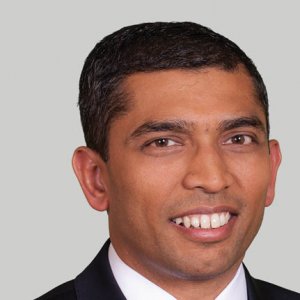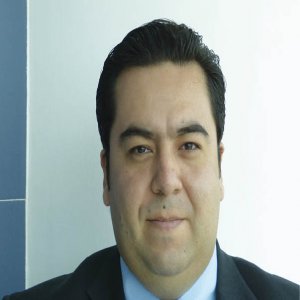Becoming the Regulator the Industry Deserves

STORY INLINE POST
Q: What hurdles has CNH already overcome and what main challenges are left for it to become the independent and effective regulator needed by the industry?
A: CNH has three main roles. First, it is CNH’s responsibility to develop the National Data Repository which will hold all available upstream information. This is part of our responsibility to develop and increase the knowledge that Mexico has about its subsoil and to advise the government on the planning and development of the oil and gas industry. Our second role is to be the technical regulatory agency for the upstream sector. We issue technical regulations in all areas apart from safety and environment, which are the responsibility of ASEA. CNH also manages all regulations regarding the metering of oil and gas production, which is a key component of contract administration. Finally, our third role is to run the bidding process for the licensing rounds and award the contracts. In this, our main objective is transparency.
CNH’s development has been moving according to schedule. We finished Round Zero by providing all our technical support to SENER and awarding areas to PEMEX based on its technical, financial, and execution capabilities. We also released the guidelines for the first phase of Round One last December consisting of 14 exploration blocks in shallow waters, we announced the second phase of Round One in February consisting of nine blocks distributed over five areas, and we presented the third phase of Round One dedicated to onshore fields in April.
Q: How have external economic factors affected operators’ interests in the first bidding stages?
A: The full information will be available on July 15th, when we receive the economic proposals and open the envelopes. The bidding process contains three stages. In the first one, companies acquire the data package available from the Data Room and analyze the information. In the second stage, these companies present their technical credentials and their financial strength. Initially, 49 companies showed interest in this round, of which 41 requested access to the Data Room and 39 were authorized to enter it. These were mostly international oil and gas leaders as well as a few Mexican companies. After that, 34 companies went through the prequalification process, the final results of which will be published on May 15th. Does that ensure that all those companies are going to place a bid? We do not know. To be honest, the final answer will not be known until July. We are aware that currently the market is facing a scenario where oil prices have dropped by around 50%. However, when companies look at these projects, they are not basing their assessment on present market prices but rather on a longterm perspective. For instance, the blocks from the first bidding phase can start production in 2019. By then, the best forecast from the futures markets indicate a price expectation of around US$70 or higher. Companies are no longer planning based on a price level of US$100 per barrel, but they are not forecasting US$40-50 either. They are looking at US$70 barrels, which is a very healthy price level. However, we are certainly under more competitive circumstances and oil companies are going to be more selective in the type of projects that they pick.
Q: Some companies feel that the restriction in meetings between CNH and the industry will result in limited access to information. How are you addressing that?
A: It is true that our transparency standards do not follow international practices. We go beyond international best practices as we are stricter than other countries. All questions about the bidding process have to go through CNH’s website and the answers will be treated as public information. The bidding day will also be treated specially, according to what is established in the guidelines. On that day, the companies will present their envelopes, we will open them in front of the cameras, and we will announce the winning company on that same day. Other countries have very discrete processes, but we have to build credibility for Mexico. We are aware of the fact that we do not have that yet, it will take time, and it will take tough measures like the ones we are taking. In terms of information access, our Data Room is state-of-the-art and international advisors have said that it is second to none in the world. All the information is available and we have updated it periodically with specific technical data that companies have requested. The companies that have paid to access the Data Room receive a hard disk with 2TB of encrypted information. Additionally, they have access to our physical Data Rooms where they can visualize all the information arranged in a simple format. Without a doubt, all existing information for the areas up for bidding is available in the Data Room, creating a level playing field. It may be uncomfortable to have to submit questions and recommendations through our webpage but it is a small price to ensure transparency.
Q: What will be CNH’s responsibilities regarding the minimization of risks?
A: The way we have split the responsibilities between ASEA and CNH is similar to the system in the US, where BOEM is in charge of licensing and BSEE takes responsibility for regulation, safety, and the environment. The difference is that ASEA is responsible for safety and environment from upstream to downstream. Some countries such as Norway and Australia have a regulator dedicated to upstream, while others have a downstream regulator. In our case, ASEA is responsible for safety and the environment for the oil and gas sector from upstream to downstream, while CNH is responsible for the technical conditions. Insurance is a very important part of ASEA’s responsibility.
Q: What steps can CNH take to attract, train, and retain a highly skilled labor force now that the competition is about to skyrocket?
A: This can be divided in terms of financial resources, the availability of human talent, and how we can compete with the international oil industry. In terms of financial resources, the Energy Reform left us well equipped as we can now charge fees for all the services we provide to the industry. For instance, companies have to pay to access the Data Room. We also charge PEMEX for supervising its entitlements as well as charging fees for our supervision projects and contract administration services. In less than five years, we expect CNH to be financially self-sufficient. Right now, we have 150 public servants working here, but we will duplicate this number by the summer of 2015. As we are not a big agency, 300 employees is going to be a reasonable number, especially when compared with other international agencies like the NPD in Norway. Our model was conceived with around 300 people in mind as well as continuous help provided by different consultants. Our talent is coming from PEMEX, IMP, and the private sector. We want to provide an attractive alternative for people who want to serve their country, who want to learn, start a career, or work on career development. We are competitive in terms of salary and training, and we are able to provide scholarships for Master’s degrees and PhDs. We do not intend to compete with the big bonuses offered in the oil industry, but we are not looking for such people. We are looking for people who want to serve their country, which is not something every company can offer.






















